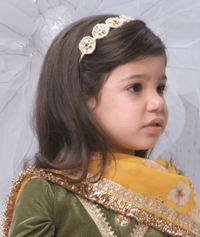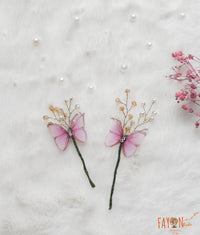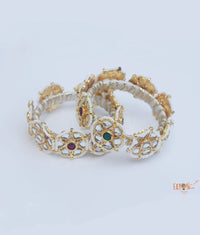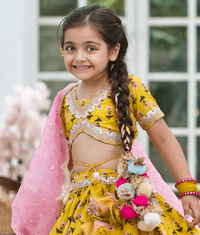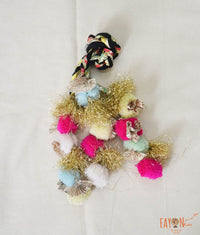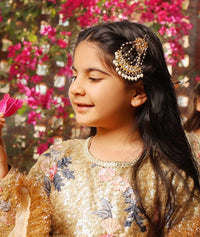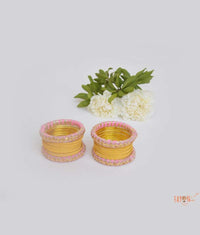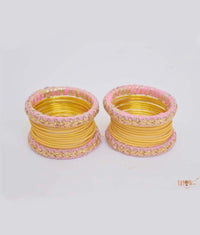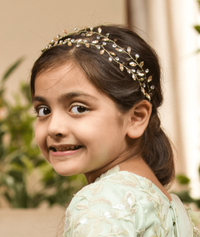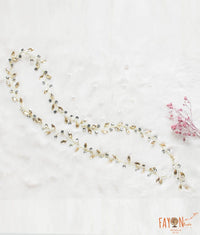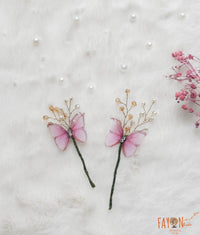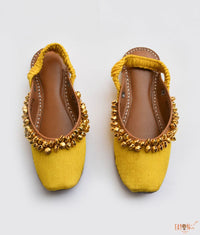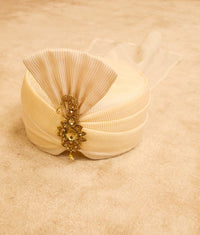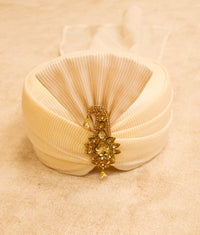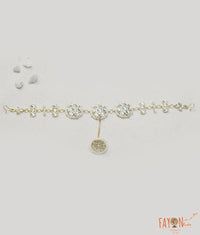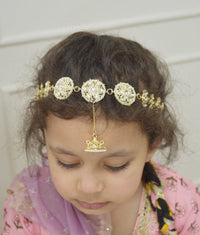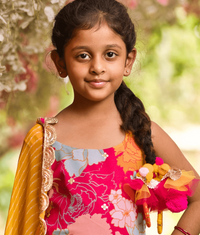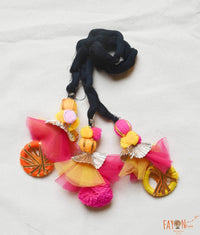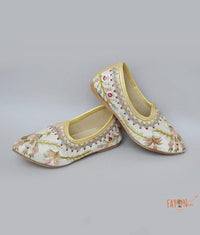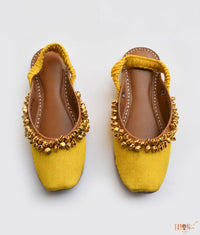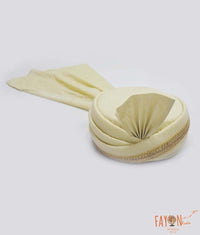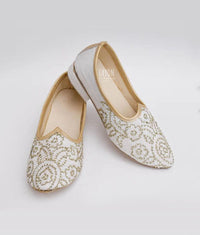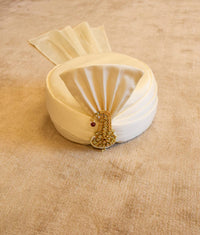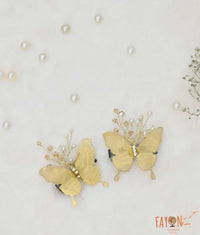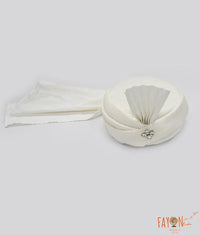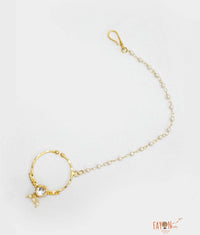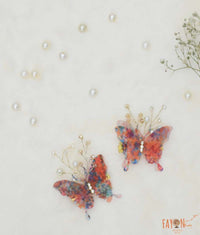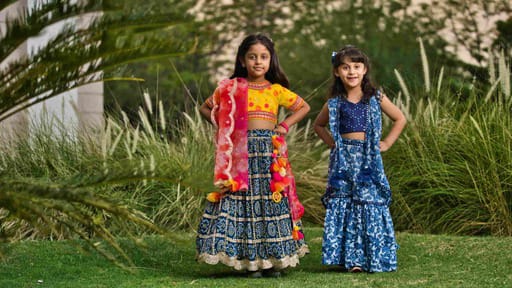
Dos and Don'ts for Styling Children in India: A Guide for Fashionable Parents
Fayon SeoDos and Don'ts for Styling Children in India: A Guide for Fashionable Parents
In India, where vibrant colors and rich traditions intertwine, dressing children is an art form. Parents take immense pride in adorning their little ones in stylish and comfortable outfits, reflecting their personalities and cultural heritage. However, navigating the world of children's fashion can be tricky, especially with the plethora of options available. This blog aims to guide Indian parents through the dos and don'ts of styling their children, ensuring they look their best while feeling comfortable and confident.
Do:
- Prioritize Comfort Above All: Children are bundles of energy, constantly running, playing, and exploring their surroundings. Their clothes should never hinder their movement or cause discomfort. Opt for soft, breathable fabrics like cotton, silk, and linen, especially during the hot Indian summers. Avoid stiff materials, tight fits, and excessive embellishments that can irritate delicate skin.
- Embrace Cultural Influences: India boasts a diverse and rich textile heritage. Explore traditional fabrics like handloom weaves, khadi, and silks, incorporating them into your child's wardrobe. Not only will these outfits be comfortable and unique, but they will also instill a sense of cultural appreciation in your child.
- Celebrate Color: India is synonymous with vibrant colors. Don't shy away from incorporating bold hues and playful patterns into your child's clothing. Experiment with different color combinations and prints, keeping in mind the occasion and your child's personality. At Fayon Kids, we offer a wide range of colorful lehengas, kurtas, and dresses that celebrate the vibrancy of Indian fashion.
- Focus on Functionality: When choosing clothes for younger children, prioritize functionality. Opt for easy-to-wear pieces like slip-on dresses, kurtas with buttons or zippers, and pants with elastic waistbands. This will make dressing and undressing a breeze for both you and your child.
- Involve Your Child: As your child grows older, involve them in the decision-making process. Let them choose their favorite colors, patterns, and styles. This will not only foster their sense of individuality but also teach them valuable lessons about self-expression and responsible decision-making.
- Accessorize Wisely: Accessories can add a touch of personality and flair to your child's outfit. Opt for age-appropriate accessories like colorful headbands, playful hair clips, or delicate jewelry. However, avoid excessive accessorizing that can overwhelm your child or pose a safety hazard.
Don't:
- Follow Trends Blindly: While staying updated with the latest trends is tempting, remember that not everything will suit your child's unique style and needs. Prioritize comfort and functionality over fleeting trends. Choose timeless pieces that can be easily mixed and matched to create versatile outfits.
- Compromise on Quality: Invest in good quality clothes made from durable and natural fabrics. These garments will last longer, withstand multiple washes, and be gentler on your child's skin. Avoid cheap, synthetic materials that can cause irritation and wear out quickly.
- Overdress Your Child: Dressing children in overly formal or elaborate outfits for everyday occasions can be restrictive and uncomfortable. Opt for age-appropriate clothing that allows them to move freely and explore their surroundings without feeling constricted.
- Forget About the Weather: India experiences diverse weather conditions throughout the year. Ensure your child's clothing is appropriate for the season. During summers, opt for lightweight, breathable fabrics. In winters, prioritize layering with warm clothes like jackets and sweaters.
- Neglect Footwear: Comfortable and supportive footwear is crucial for children's development. Choose shoes that fit well, provide good arch support, and are suitable for the activity. Avoid ill-fitting shoes or uncomfortable sandals that can cause blisters or hinder movement.
- Pressure Your Child: Remember, children are individuals with their own preferences and styles. Don't force them to wear clothes they dislike or feel uncomfortable in. Encourage self-expression and allow them to explore their unique sense of fashion within reasonable boundaries.
Additional Tips:
- Shop Local: Support local artisans and businesses by purchasing handmade clothing for your child. This not only promotes sustainability but also ensures unique and ethically produced garments.
- Embrace Hand-Me-Downs: Don't hesitate to pass down clothes from older siblings or cousins. This is a sustainable and cost-effective way to expand your child's wardrobe with well-loved pieces.
- Create a Capsule Wardrobe: Curate a capsule wardrobe for your child with versatile pieces that can be easily mixed and matched to create multiple outfits. This will save you time and money while ensuring your child has a variety of options to choose from.
- Teach Proper Care: Inculcate good habits in your child by teaching them basic clothing care. This includes proper washing, drying, and storage techniques, which will help extend the life of their garments.
From a parent's perspective, styling their children in India holds significance beyond just choosing clothes. It's a multifaceted experience woven with cultural expression, comfort, personal growth, and fostering a sense of belonging. Here's a breakdown of its importance:
Cultural Expression:
- Celebrating Heritage: Dressing children in traditional attire like kurtas, lehengas, and dhotis connects them to their cultural roots and fosters a sense of pride in their heritage. It allows them to participate in cultural festivities and traditions while feeling connected to their ancestors.
- Promoting Diversity: India's diverse textile traditions and vibrant colors offer a plethora of options to showcase cultural richness. Parents can use clothing as a tool to educate their children about different regions, ethnicities, and weaving techniques, fostering appreciation for the country's cultural tapestry.
Comfort and Functionality:
- Prioritizing Physical Well-being: In India's hot and humid climate, breathable fabrics like cotton and silk are essential for children's comfort. Parents prioritize clothes that allow for free movement and prevent irritation, ensuring their children can play and explore their surroundings without discomfort.
- Catering to Developmental Needs: As children grow, their clothing needs evolve. Parents choose age-appropriate outfits that are easy to wear and manage, promoting independence and fostering self-confidence.
Personal Growth and Confidence:
- Developing Individuality: As children mature, they begin to form their own sense of style and preferences. Parents who involve their children in choosing clothes empower them to express their individuality and build confidence in their choices.
- Building Self-Esteem: Feeling good in what they wear can positively impact a child's self-esteem. Parents who take effort to style their children in clothes they love can contribute to their overall well-being and confidence.
Sense of Belonging:
- In India, where communities are often close-knit, dressing children in traditional attire for festivals and celebrations fosters a sense of belonging and connection with their peers and community. It allows them to participate in shared experiences and feel a part of something larger than themselves.
- Expressing Social Identity: Clothing can also be a way for children to express their social identity, whether it's belonging to a particular school, sports team, or cultural group. Parents can support this by incorporating elements that reflect their child's social connections.
Additional Considerations:
- Sustainability: Many parents in India are becoming increasingly conscious of sustainable practices. They opt for ethically sourced, eco-friendly clothing made from natural materials, reducing their environmental impact and teaching their children valuable lessons about responsible consumption.
- Economic Factors: For some families, affordability plays a crucial role in clothing choices. Parents might opt for hand-me-downs, locally sourced garments, or explore cost-effective options while still prioritizing comfort and cultural relevance.
In conclusion, styling children in India goes beyond mere aesthetics. It's a way for parents to nurture their children's cultural connection, ensure their comfort and well-being, foster their individuality and confidence, and help them feel a sense of belonging within their community. By understanding these diverse aspects, parents can make informed choices that contribute to their children's holistic development and well-being.
